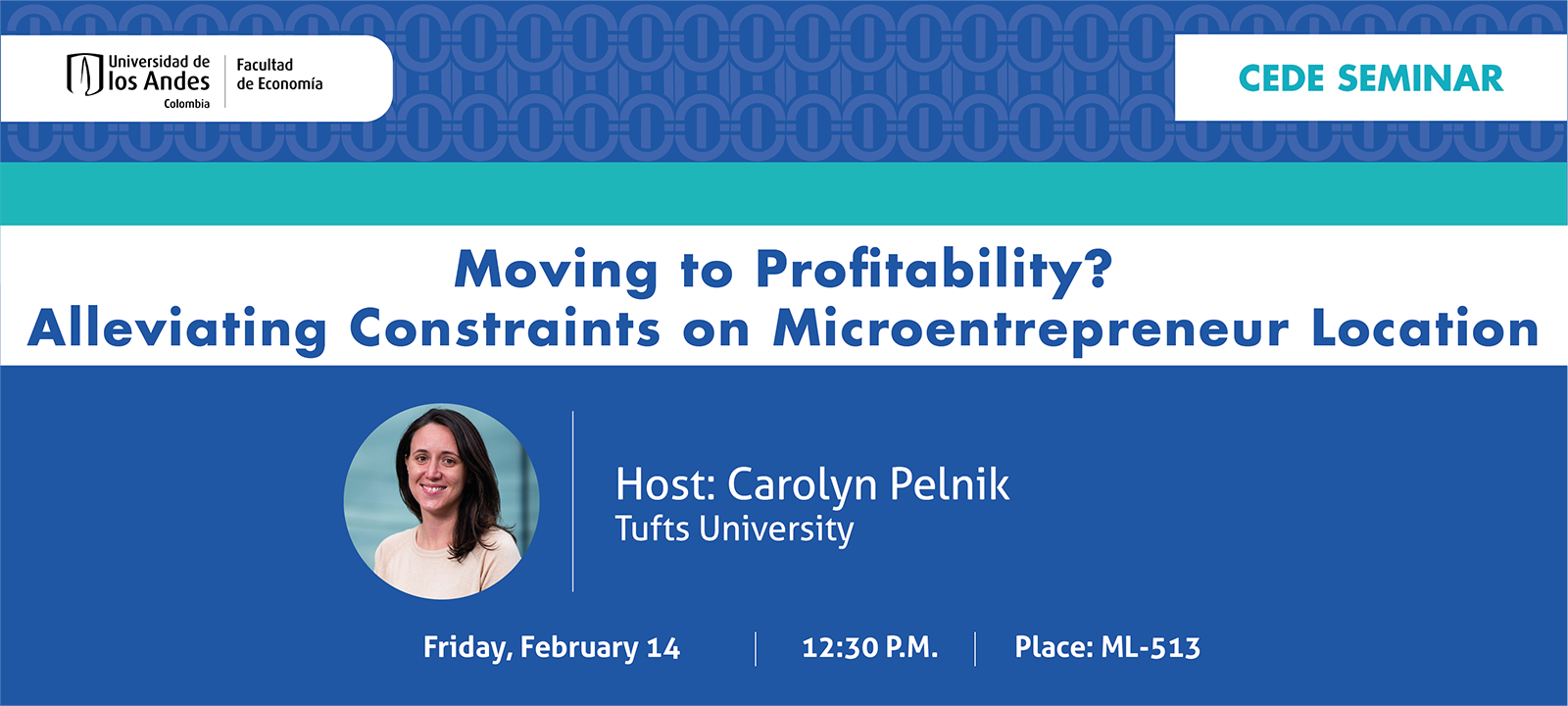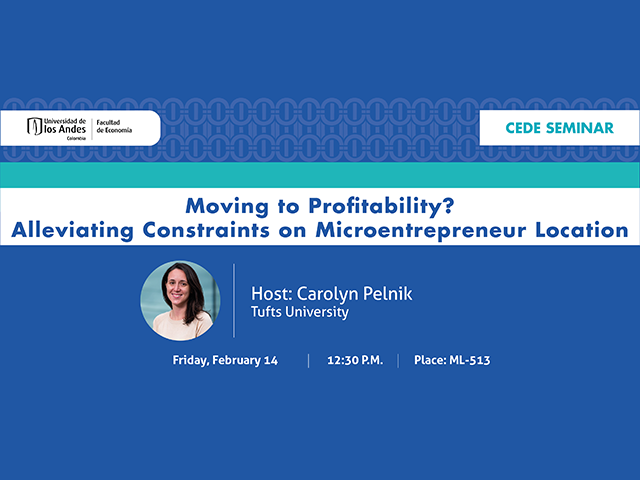CEDE Seminar - Carolyn Pelnik

Observationally similar business owners earn vastly different profits across city locations within Kampala, Uganda. This variation may reflect spatial misallocation, aspects of entrepreneurs’ objective function other than profits (e.g., amenities or risk), or sorting on unobservables. I first quantify the extent of profit variation using primary surveys of microentrepreneurs. I then quantify the extent of spatial misallocation using a field experiment with nearly three thousand microentrepreneurs and a structural model. I experimentally allocate a moving subsidy, cross-randomized with an information intervention, and estimate the effect of moving business location on profits. Entrepreneurs realize 45% higher profits—net of the value of the subsidy—as the result of moving, but only when they receive both the subsidy and information. The subsidy serves as insurance for profitable but risky moves, and information induces high-return entrepreneurs to select into moving. Impacts fade throughout the month after the intervention ends, consistent with risk-averse entrepreneurs gradually losing the ability to self-insure. I rationalize these results in a structural model where entrepreneurs choose locations and realize profit in equilibrium. Using data from the experiment to estimate the model, I show that aggregate income increases by 37% when financial and information constraints are relieved at scale. The results demonstrate spatial misallocation of entrepreneurs within the city, as well as complementarities between liquidity and information in overcoming frictions that otherwise inhibit the mobility of entrepreneurs.

